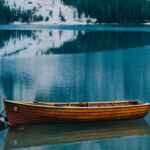Ming Arete Home › Forums › Poetry & Literature › Idea about rhythm for translating classical poems
Tagged: Chinese, form, Góngora, Hand, LiBai, Lowell, Philip, poetry, Quevedo, translation, verse, WangWei, 古诗, 李白, 杜甫, 王维, 翻译
-
Interesting post, Phil. I agree that it is worth trying to convey something of the rhythm of the original Chinese texts when translating shi poems, and that doing so entails recognizing that the verses in these poems are divided into hemistichs. I have never understood why David Hinton introduces wild enjambments into his versions. (Then again, Robert Lowell took analogous liberties in his translations from European poetry, sometimes to good effect; I’m thinking in particular of the final section of Near the Ocean, where he does wonderful things with the Spanish poets Quevedo and Góngora, among others.)
What do you think about using alliteration to help convey the highly-patterned nature of shi poetry? For example, one might translate the first couplet of Du Fu’s 春望 as follows:
国破山河在
城春草木深
the state shattered hills and rivers still here
city spring trees and grasses grown thick
I like the idea of using rhyme (or at least slant rhyme) where it can be achieved without forcing things, but for me the key goal it to try to convey, by whatever means are available, that what is being translated is a poem.
-
Yep, alliteration definitely works… In fact, you’re right, I think I’ve led myself down the Sinologists’ blind alley again. Because the point isn’t to try to reproduce the form of the Chinese poem, or even to transmute it in some way. The urge to do that comes from the scholar’s natural interest in Chinese forms. But a translator should be translating the poetic expression in Chinese into a poetic expression in English (or whatever language), using the resources available in English…
I think the same must go for rhyme, as well. Rhyme is a resource that exists in both Classical Chinese and English; but that’s not a reason to think it should be used the same way in the two languages. In short poems I manage to remember that, and I generally choose a rhymescheme that works for the English poem. But in longer poems I quite often borrow the rhymescheme from the source text. For example, in Du Fu’s Army Carts and Autumn Gale Blows Thatch off my Roof, he uses rhyme to define different sections of the poem. He keeps a single rhyme for a whole section of six or eight lines, and when he changes the rhyme, the mood or subject changes, too. It’s quite convenient to follow his lead, but I wonder if I should be looking for other options to use.
-

















